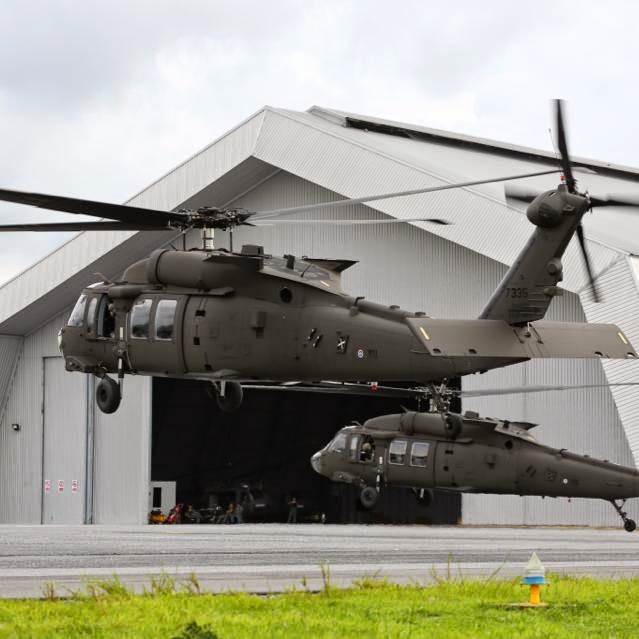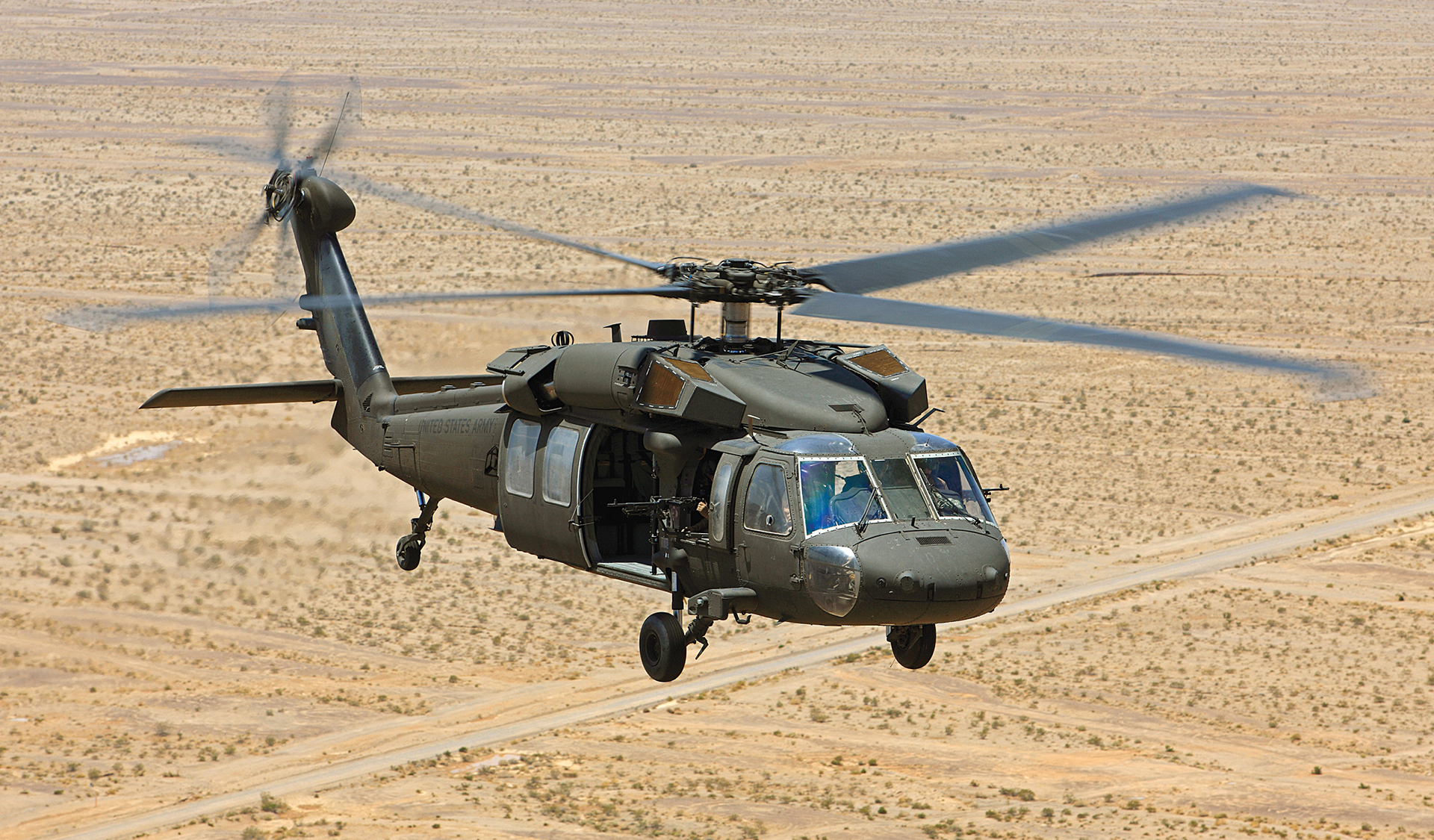UH 60 Helicopter Maintenance: A Comprehensive Overview for Pilots
UH 60 Helicopter Maintenance: A Comprehensive Overview for Pilots
Blog Article
Browsing Uh 60 Helicopter Rules and Conformity Needs

Regulatory Framework Summary
The regulatory framework controling UH-60 helicopter procedures includes a complicated set of criteria and policies established by aviation authorities. These laws are made to make sure the risk-free and efficient operation of UH-60 helicopters in numerous atmospheres. The Federal Aviation Management (FAA) plays a central role in developing and implementing these regulations, which cover a vast array of operational facets, including airworthiness criteria, pilot certifications, maintenance demands, and operational treatments.
Compliance with these guidelines is vital for helicopter drivers to preserve the highest levels of safety and security and operational honesty. Failure to abide by these policies can cause major effects, including mishaps, injuries, and governing permissions. Consequently, helicopter operators need to stay notified concerning the current governing developments and guarantee that their procedures are in full compliance with all relevant rules and requirements.
Airworthiness Directives and Evaluations
In the middle of the regulatory structure controling UH-60 helicopter operations, a vital focus rests on compliance with Airworthiness Directives and conducting thorough examinations to maintain safety criteria and functional reliability. Airworthiness Instructions (ADs) are released by air travel authorities to deal with harmful problems in aircraft, consisting of the UH-60 helicopter, and mandate certain actions to be taken by proprietors or operators. Compliance with Advertisements is necessary, and failing to follow these instructions can cause major effects, including grounding of the airplane.
Regular assessments are critical to making certain the airworthiness of UH-60 helicopters. These evaluations incorporate a range of checks, from routine day-to-day inspections carried out by pilots prior to and after flights to a lot more thorough scheduled upkeep examinations performed by accredited technicians. Additionally, special assessments might be required based on particular problems or events. By sticking to a strict evaluation program, drivers can detect and deal with prospective problems immediately, therefore enhancing the safety and reliability of UH-60 helicopter operations.
Pilot Credentials and Training

Pilot training for UH-60 helicopters is detailed and covers a vast array of subjects, consisting of airplane systems, emergency procedures, navigation, and mission-specific training. Additionally, pilots undergo simulator training to exercise numerous emergency situation circumstances in a regulated atmosphere. This training helps pilots develop the necessary abilities to take care of tough circumstances successfully.


In addition, ongoing training and expert advancement are crucial for UH-60 pilots to stay current with the most recent laws, modern technology, and best practices. By purchasing pilot certifications and training, drivers can improve safety and security, maximize efficiency, and make certain conformity with governing requirements in the operation of UH-60 helicopters.
Functional Limitations and Needs
Pilot qualifications and training work as the foundation for understanding the functional constraints and needs connected with UH-60 helicopter procedures (uh 60). These functional limitations are implemented to guarantee the safety from this source of the crew, passengers, and the airplane itself. Functional restrictions may include elements such as weather, weight why not find out more restrictions, elevation restraints, and functional borders. It is essential for pilots to be well-versed in these limitations to make enlightened decisions during trip procedures. Additionally, compliance needs, such as adhering to specific trip paths, communication methods, and emergency procedures, are important for keeping functional safety and governing compliance. Pilots must remain present with all functional restrictions and requirements via regular training, instructions, and examines to mitigate threats and guarantee secure and effective UH-60 helicopter procedures. By prioritizing adherence to these functional guidelines, pilots can boost the overall safety and security and effectiveness of their goals while supporting governing standards.
Emergency Situation Treatments and Conformity Screening
Reliable emergency procedures and comprehensive compliance testing are vital elements of preserving functional security and regulative adherence in UH-60 helicopter procedures. Emergency procedures include protocols for various scenarios, including engine failures, fires, hydraulic issues, and more. Pilots and staff participants have to be fluent in these treatments to react swiftly and effectively in emergencies. Normal conformity testing guarantees that the helicopter meets all regulatory needs stated by air travel authorities. This testing involves detailed examinations, checks, and analyses to verify that the aircraft is airworthy and in conformity with all suitable policies.
Compliance screening also reaches devices onboard the UH-60, such as interaction systems, navigation tools, and safety equipment. Ensuring that all tools is functioning appropriately and meets regulative criteria is vital for secure operations. In addition, compliance testing might involve simulations of emergency situation situations to assess the crew's action and the helicopter's efficiency under tension. By focusing on emergency situation procedures and compliance screening, UH-60 drivers can mitigate dangers and show their dedication to safety and regulative conformity.
Conclusion
To conclude, adherence to regulative framework, compliance with airworthiness regulations, pilot certifications and training, operational restrictions, and emergency procedures are vital for browsing the guidelines and demands of operating a UH-60 helicopter. uh 60. It is important for operators to prioritize safety and ensure full conformity with all relevant laws to keep the airworthiness and functional stability of the aircraft
Navigating the governing landscape bordering UH-60 helicopter operations demands a nuanced understanding of the intricate internet of policies and compliance requirements.Conformity with these laws is necessary for helicopter operators to maintain the highest possible degrees of security and operational honesty.In the middle of the regulatory structure regulating UH-60 helicopter operations, a critical emphasis lies on conformity with Airworthiness Directives and carrying out extensive inspections these details to promote security standards and functional dependability.Reliable emergency treatments and complete compliance screening are crucial parts of preserving functional security and governing adherence in UH-60 helicopter operations. Normal compliance screening ensures that the helicopter fulfills all regulatory demands established forth by air travel authorities.
Report this page